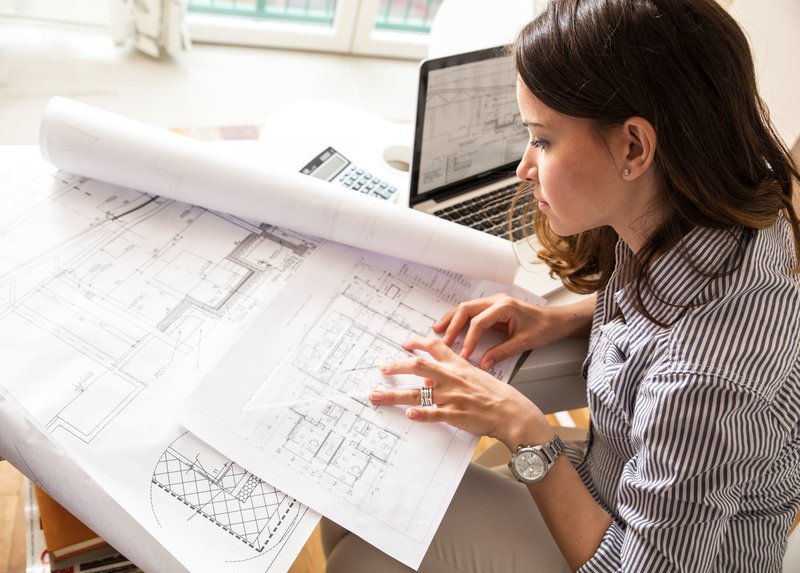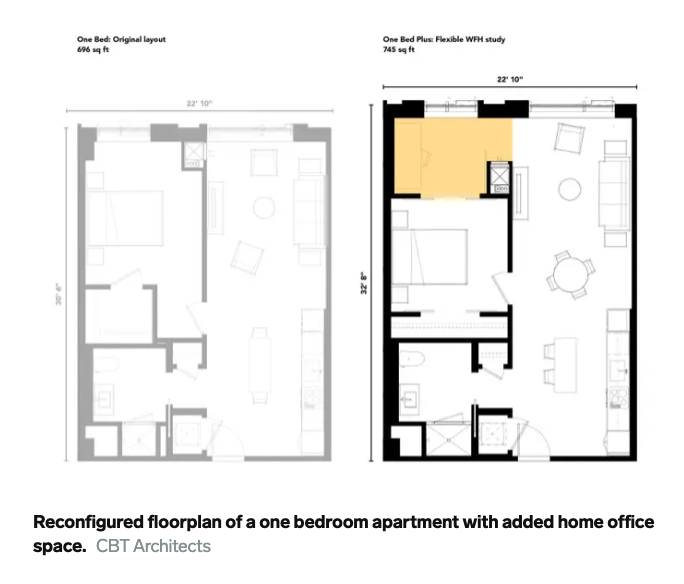
Natasha Solo-Lyons
Aug. 4, 2020
Architects are already designing for a post-pandemic way of life.
One of them is Vickie Alani, a principal at Boston-based architecture firm CBT, one of the city's top design firms.
A specialist in multi-family residential and hospitality design who boasts a 30-year record in architecture, Alani said the industry is changing, and she sees a place for multifamily despite the soaring demand for single-family residences during the pandemic.

As the US starts to open back up, Alani said multi-family demand is still there, just not at its pre-pandemic level.
"The developers who decide to make the changes we're proposing will see increased interest from prospective residents," Alani predicted, adding that many of the changes "are not extraordinary — some of the alterations, in fact, are quite modest."
New buildings that understand and are responsive to residents' new lifestyle behaviors will undoubtedly be more desirable, she said, and owners of older buildings will need to make changes to update their properties if they want to compete on rent and sale prices.
"No matter their location, every renter has experienced this pandemic and its impact on their home," Alani said. "Everyone has felt the constraints of their buildings on their sense of freedom and well-being. They will not soon forget the fundamental challenges of their spaces and how they have or have not shaped a sense of convenience and comfort."
Alani said prospective renters want responsiveness from building owners now, and it seems new accommodations can't come soon enough.
She shared the four major changes to building plans that are completely overhauling multi-family design, and what you should keep in mind if you're planning to rent, develop, or invest.
1. Floorplans for doubling the size of personal package and take-out delivery rooms
"Because they can't leave home, many residents are ordering more packages from online retailers and takeout," Alani said. "In many cases, residents are letting packages lie for a few days and opening them outside of their units for sanitation purposes."
Package delivery rooms typically have a substantial locker area. By removing some lockers and doubling the square footage of the room, building owners can increase the functionality of these spaces by installing sanitation stations that have a sink, wipes and antibacterial sprays, and more options for disposing of recycling and trash. Designating space for sanitation and disposal helps residents maintain the cleanliness of their homes.
The extra space would also allow for a food delivery area where a delivery driver could leave a takeout order, to reduce face-to-face interaction and improve resident safety.
"We're also recommending that building owners consider hiring a full-time concierge for package and food delivery to enhance package management, from loading to delivery," Alani said.
2. The installation of real-time occupancy and sanitation data analysis systems
"We're researching different types of applications and technological systems that track the nuances of building management even more closely than before," Alani said.
She said some systems record (in real time) when a common area was cleaned and how much foot traffic it experiences at different points in the day. She said that she recently worked with an institutional client to create an app that provides data on which chairs or lounge furniture and spaces were used and how often.
Data analytics can help inform the frequency of scheduled cleanings and reduce the chance of overstaffing by aligning building operations with need. These systems can help to not only track the cleanliness of high-traffic areas, but also reassure both building staff and residents that efforts are being concentrated on maintaining safety and sanitation.
"These types of technology will suddenly be in high demand as we look ahead," she said.
3. Multiple layouts with work-from-home alcoves or studies that don't require a significant expansion of unit size
"It's likely that, even after a vaccine is developed, employees who can work from home will do so with more regularity than before the pandemic," Alani said.
By slightly increasing unit size, she said, even just by 45 to 50 square feet, a work-from-home space can be added to a bedroom, to the kitchen to include added storage (or serve as a bar during after work hours), or as a living space divider.
"We also have a layout that features a small den that is open to the living room and is located along the window line," Alani said. "This configuration provides an acoustic and physical division from other living spaces, while also allowing remote workers to have more access to outside views and natural light."

4. Alternative ideas for activating the ground floor, outside of traditional retail
"One significant change we have been anticipating, and that has now been accelerated, is the shrinking of first-floor retail," Alani said.
"Urban apartment buildings have always relied on robust, interesting and financially attractive retail on the entire first floor. We have been asked, as designers, to keep the residential program as small as possible on the ground floor to reap the higher rents that come with a retail tenant. Not so anymore."
"There can be some great outcomes," she said. "First of all, the residents will no longer enter into a hermetically sealed box — one that whisks them away from the busy street, up into an elevator and away from the activity of the street. As retail scales back, the residential program can play a more active part in the energy of the city. Amenities can front sidewalks, where residents can spill out with their laptops and coffee and occupy the exterior of their building just as café and restaurant patrons do."
This is also a time to explore how the growing "maker culture" can help to fill places in a city, according to Alani. "Wouldn't it be wonderful to run into streets of active artist lofts/studios on the ground floor? Alternative retail uses can also help fill in for big-box footprints — allowing several restaurants to use the same outdoor and partially covered seating areas."
"As the first-floor envelope suddenly needs to flex and evolve, streetscapes have the potential to become more dynamic and interesting."
Subscribe to Business Insider's Financial Insights Newsletter
This Business Insider article was legally licensed by AdvisorStream


